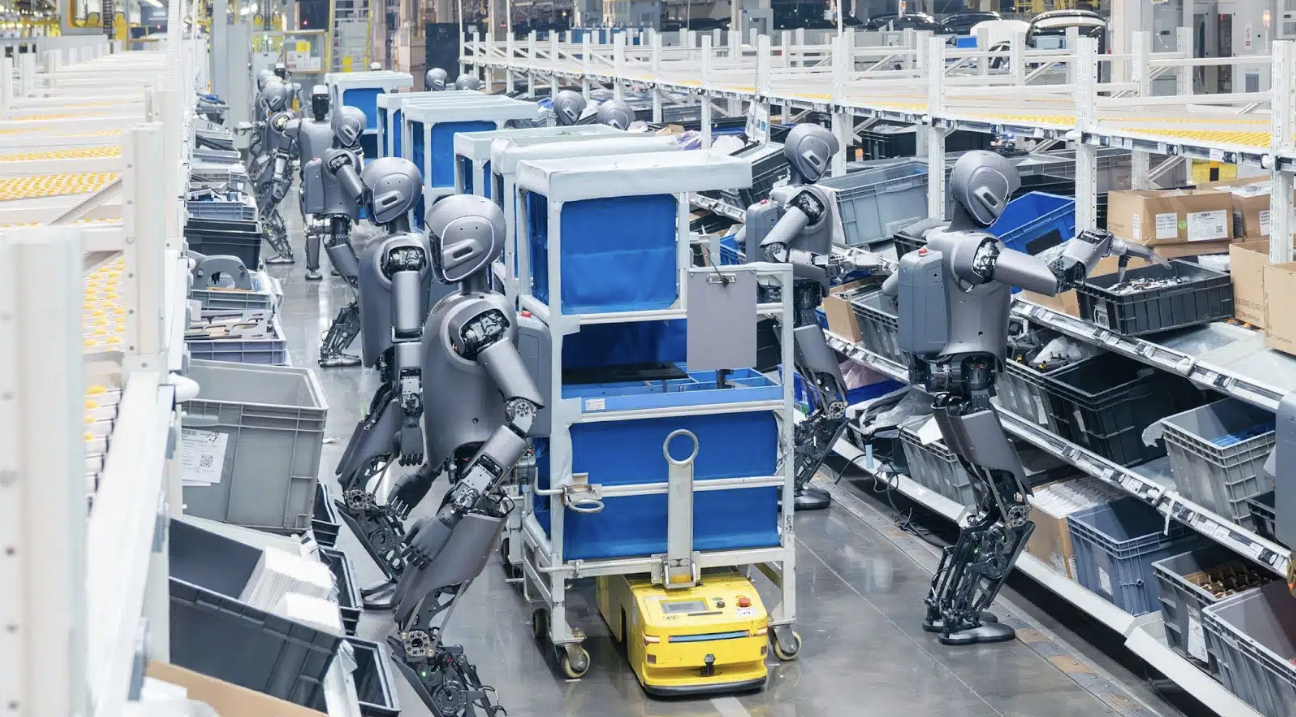
UBTECH Robotics has achieved a major breakthrough in industrial automation with robots. The Shenzhen-based company successfully completed the world’s first multi-humanoid robot collaborative training program at Zeekr’s 5G Intelligent Factory. This marks a significant step in deploying swarm intelligence in smart manufacturing.
Swarm Intelligence in Industrial Automation
UBTECH’s Walker S1 humanoid robots worked together across different production zones. These included assembly workshops and quality inspection areas. The robots efficiently handled sorting, precision assembly, and material transport. This initiative moves humanoid robots from working alone to collaborating in groups, improving efficiency and flexibility in industrial settings.
The company shared this achievement on LinkedIn, emphasizing the transition from single-agent autonomy to swarm intelligence. This approach allows multiple robots to work in sync, tackling complex tasks that require real-time coordination.
How BrainNet Enhances Robot Collaboration
At the core of this development is BrainNet, UBTECH’s advanced software framework. It provides robots with a cloud-connected “super brain” for high-level decision-making. Meanwhile, an “intelligent sub-brain” manages localized control. This dual-layered system helps the robots collaborate effectively and adapt to changing environments.
A large reasoning multimodal model powers BrainNet. This model enables robots to schedule and coordinate tasks autonomously. UBTECH also developed the Internet of Humanoids (IoH), a control hub that optimizes workflow and improves task execution accuracy.
Inside the Practical Training 2.0 Program
At Zeekr’s factory, dozens of Walker S1 robots participated in hands-on training. The program covered:
- Sorting: Robots used vision-based perception and hybrid decision-making to allocate tasks dynamically.
- Handling: The system adapted to uneven load distribution through advanced path planning.
- Precision Assembly: High-precision sensors enabled the robots to handle fragile and deformable materials without causing damage.
UBTECH trained its multimodal reasoning model on real industrial data from automotive factories. The model uses retrieval-augmented generation (RAG) technology to enhance decision-making and scalability. This makes the robots more adaptable to real-world scenarios.
Expanding Smart Manufacturing with Humanoid Robots
UBTECH is working with major automakers like Geely Auto, BYD, and Audi FAW to integrate its Walker S series robots into global manufacturing processes. The company plans to expand the Practical Training 2.0 program to more factories, accelerating the adoption of humanoid robots in smart manufacturing.
“Swarm Intelligence represents the next frontier in robotics,” UBTECH stated. “Our innovations pave the way for scalable deployment in complex industrial workflows.”
This milestone underscores the potential of collaborative humanoid robots in revolutionizing modern industries. With advanced AI-driven coordination, these robots can enhance productivity, precision, and adaptability in manufacturing environments.
